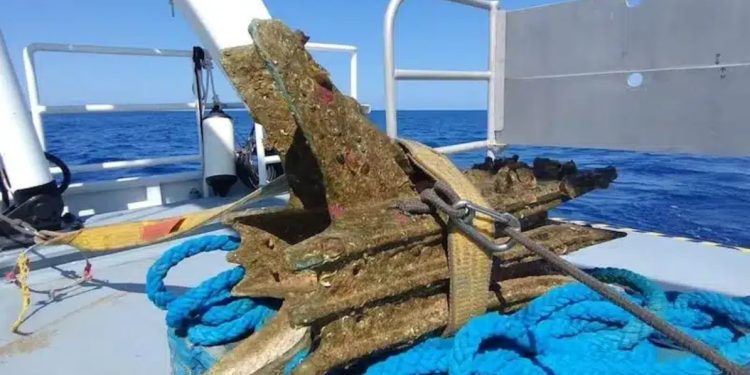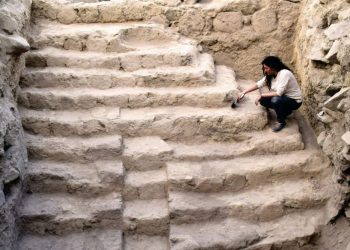A significant archaeological discovery has been made off the coast of Sicily, where researchers have recovered a 2,200-year-old bronze battering ram from the depths of the Mediterranean Sea. This ancient weapon, believed to have been used in the historic Battle of the Aegates, offers a rare glimpse into the epic conflict between Rome and Carthage.
The battering ram, found at a depth of 260 feet (80 meters) near the Aegadian Islands, was once a formidable component of a Roman warship. The discovery was announced by the Sicily Superintendence of the Sea, part of the region’s Department of Cultural Heritage. The organization utilized a deepwater submarine to retrieve the artifact, which has since been brought ashore to the island of Favignana for further study.
The Battle of the Aegates, fought in 241 B.C., marked the decisive final confrontation of the First Punic War, a 23-year conflict between the powerful city-state of Carthage, located in present-day Tunisia, and the Roman Republic. Battering rams like the one recently discovered were essential tools for naval warfare, enabling captains to ram and sink enemy ships. The outcome of this battle ultimately led to Carthage’s surrender and established Rome’s dominance over the Mediterranean.
Detailed analysis of the ram reveals an ornamental relief depicting a Montefortino-style Roman helmet adorned with three feathers, as reported by Finestre sull’Arte, an Italian art journal. This helmet design was standard issue for Roman soldiers of the time, highlighting the historical authenticity of the find.
This discovery is not the first of its kind in the region. The Mediterranean waters surrounding the Aegadian Islands have yielded numerous relics from ancient naval battles, including swords and coins. These findings continue to provide valuable insights into the naval strategies and warfare techniques employed by the Romans and Carthaginians.
Francesco Paolo Scarpinato, the city councilor of Palermo, emphasized the importance of the seabed around the Aegadian Islands as a rich source of historical knowledge. “The studies conducted by archaeologists have allowed us to identify the theater of the battle that solidified Roman supremacy in the Mediterranean,” Scarpinato told Finestre sull’Arte.
The discovery of this ancient battering ram not only enriches our understanding of Roman naval warfare but also serves as a powerful reminder of the pivotal events that shaped the course of history in the Mediterranean region.











